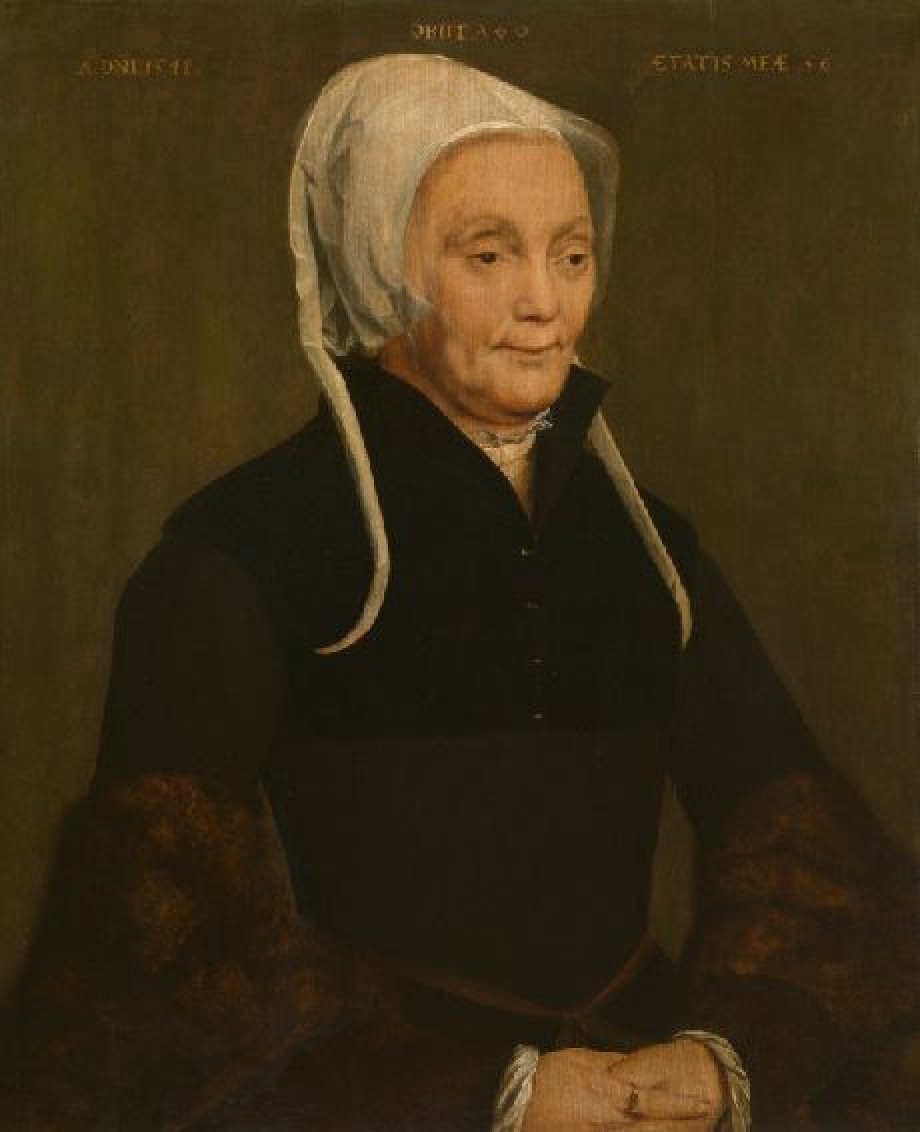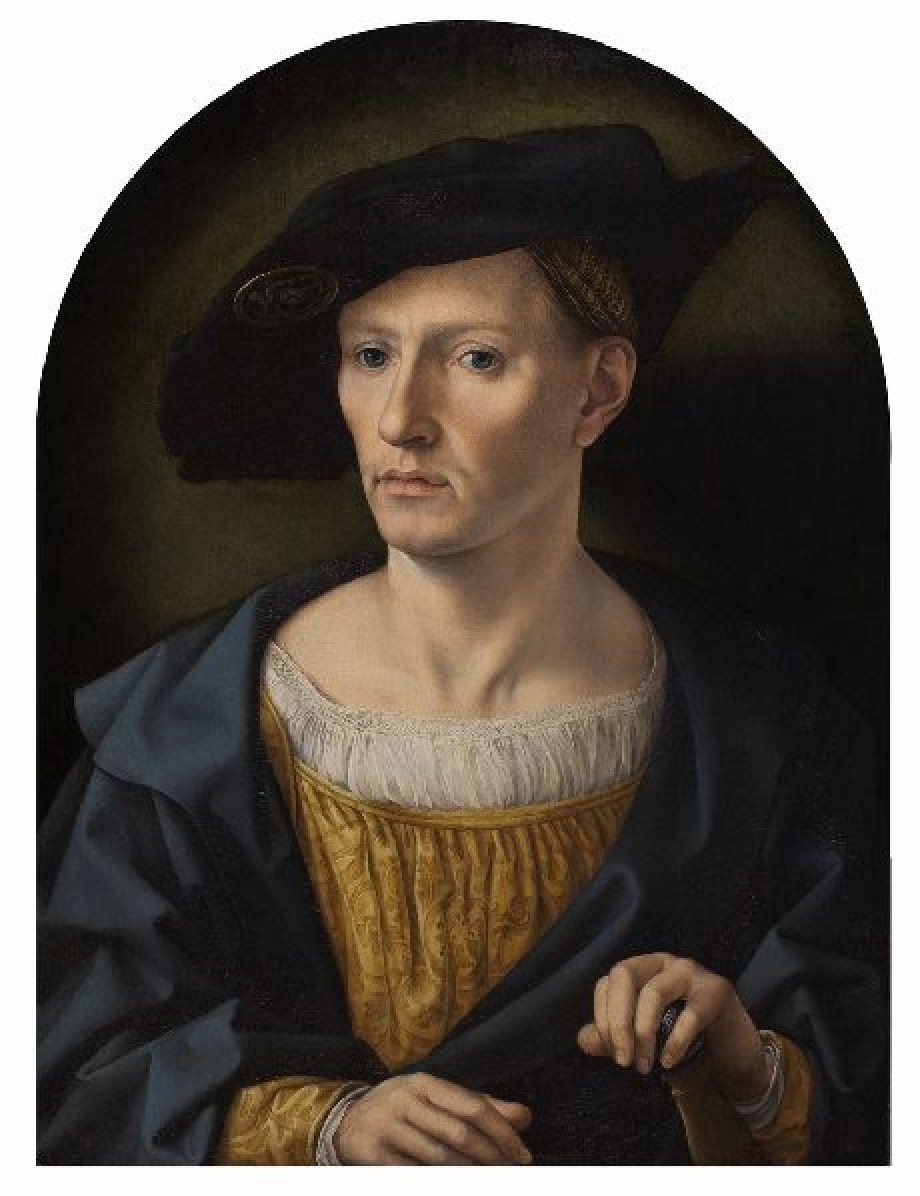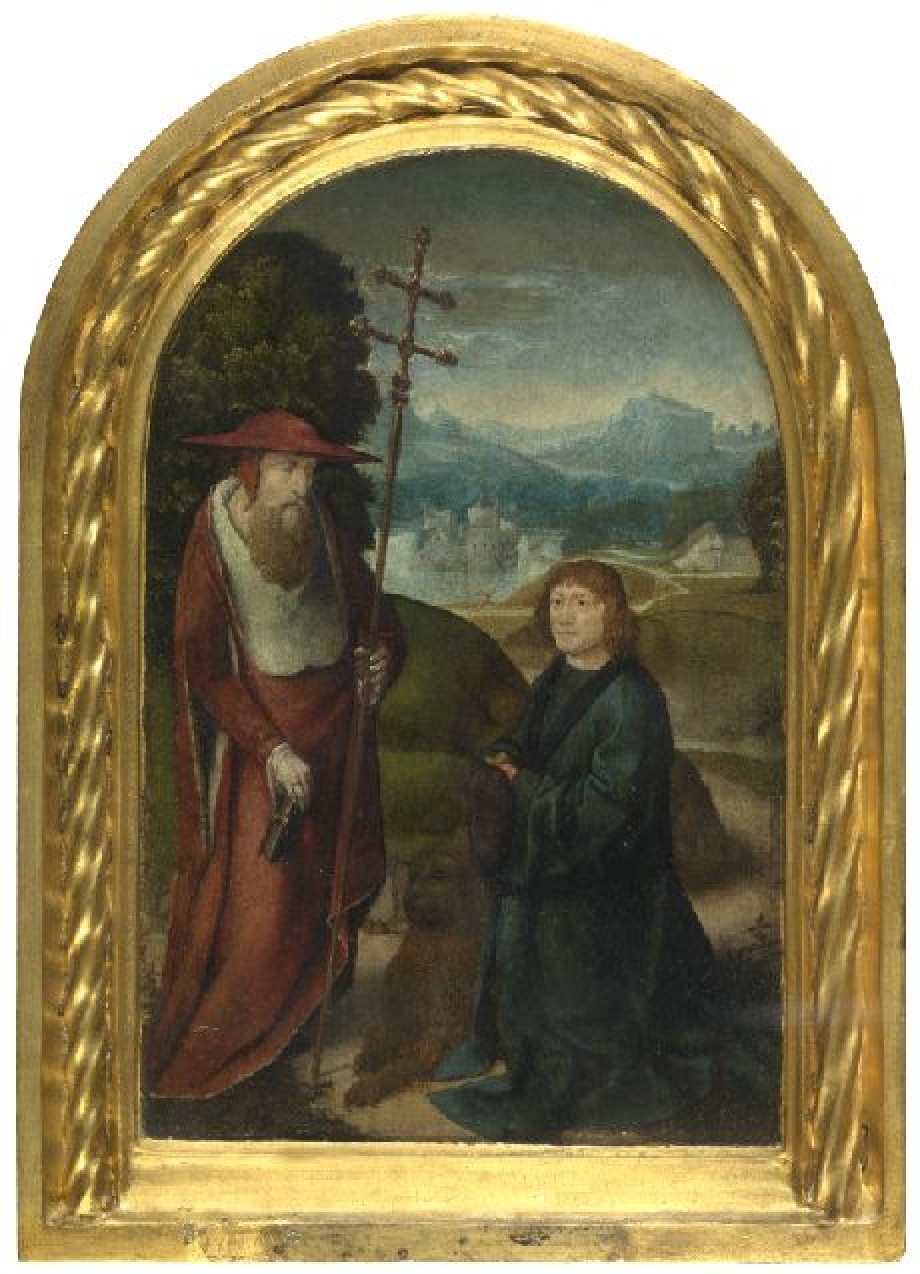Thomas Gerritszn Doesburch and Claesje Hendricksdr Roeclaes with their Daughters

Artist / maker
Anonieme Meester, Noord-Nederlands, 1559 (painter)Date
1559Period
16th centuryCollection
Royal Museum of Fine Arts Antwerp
Model family In the Low Countries, as elsewhere, the nuclear family of father, mother and children was held out in the sixteenth century as a cornerstone of society. This was also reflected in painting, with a boom in family portraits from the 1500s. The life-sized panel reproduced here is a fine example. The portrait shows the Protestant grain merchant Thomas…
Read more
Model family
In the Low Countries, as elsewhere, the nuclear family of father, mother and children was held out in the sixteenth century as a cornerstone of society. This was also reflected in painting, with a boom in family portraits from the 1500s. The life-sized panel reproduced here is a fine example.
The portrait shows the Protestant grain merchant Thomas Gerritszn Doesburch of Amsterdam, his demure wife Claesje Hendricksdr Roeclaes, and their two daughters. We are informed by the inscriptions that the man is twenty-seven and the woman twenty. They are fashionably dressed and shown in a luxurious interior with an Italian-style loggia, complete with their respective coats of arms. The message is that this wealthy, successful family is right up to date with current tastes.
A large window in the background looks out over a landscape in which we can make out Adam and Eve, the first human couple, as they commit the original sin in the Garden of Eden. Eve has picked a fruit from the tree of the knowledge of good and evil and is offering it to her husband. In a moment, God will expel them from Paradise and Eve’s disobedience will result in husbands being placed in charge over their wives. Note the protective hand that Thomas places on Claesje’s shoulder.
This is not the only allusion to the values considered important for a good marriage in 1559. The pink carnation in Claesje’s hand, for instance, is a token of her fidelity, while one of the girls is clutching an apple – the fruit of love and marriage. The other is holding a bundle of sticks, referring to the fasces or arrows, which are the attribute of Concordia, the personification of Unity. Each one is a symbol of harmony and fidelity, as are the two girls themselves: after all, according to Christian morality, having children is the ultimate purpose of a man and woman’s life together.
Read less











